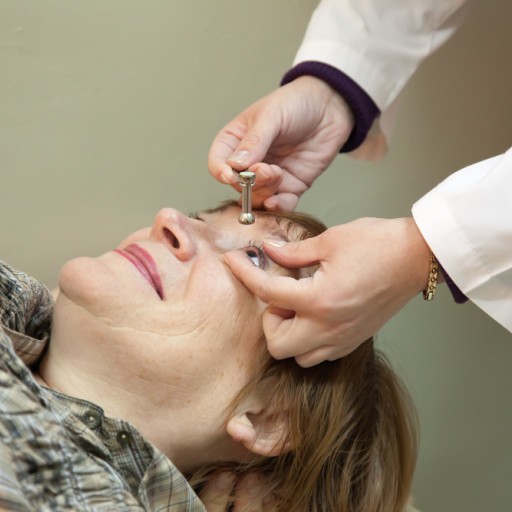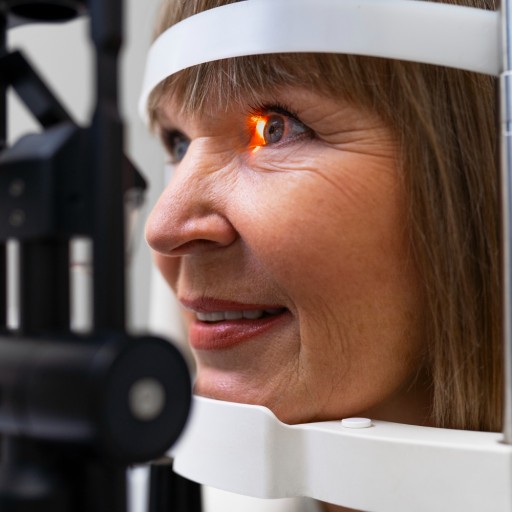Eye Pressure (Glaucoma)
3 results foundEye Pressure: Understanding Glaucoma
Glaucoma is a very dangerous eye condition, regarded as "the silent thief of sight," which might cause irreversible loss of vision if not diagnosed and treated in time. This guide will look at what glaucoma is, causes, symptoms, types, risks involved, diagnosis, treatment options, and prevention methods.
What is Glaucoma?
Actually, glaucoma refers to a group of eye conditions that destroy the optic nerve due to increased intraocular pressure. The optic nerve conveys crucial visual information from your eyes to your brain. This damage could eventually lead to loss of vision or blindness. Increased eye pressure is the key factor of risk in progressive optic nerve damage, but glaucoma can occur even when eye pressure is within the normal range.
Glaucoma Types
There are many types of glaucoma, each with unique characteristics:
Primary Open-Angle Glaucoma
The most common type, in which the pressure inside the eye increases gradually over time. It is asymptomatic at all early stages of the disease, so periodic eye exams are crucial to its diagnosis.
Angle-Closure Glaucoma
It happens when the drainage angle of the eye becomes clogged and there's a sudden increase in the pressure inside the eyeball. Symptoms are usually severe, including headache, nausea, and disturbances in vision.
Normal-Tension Glaucoma
In this kind of glaucoma, damage to the optic nerve occurs even when the pressure inside the eyes is normal. Its cause is completely unknown; however, one of the possible reasons is reduced blood flow to the optic nerve.
Secondary Glaucoma
This type results from another medical condition, such as diabetes or an eye injury, and can occur at any age.
Causes and Risk Factors
Although the exact cause of glaucoma is not known, there are several factors that may increase your chances of experiencing it:
Age: People over the age of 60 are more prone to getting this.
Family History: Having a family history of glaucoma can raise the chance of your getting it.
Ethnicity: Noticeably more prevalent in African Americans and Hispanics
Medical Conditions: Diabetes, High blood pressure, and Thyroid diseases have the potential to contribute.
Eye Conditions: A history of eye injury, ocular surgeries, or diseases like nearsightedness can serve as a predisposing factor.
Symptoms of Glaucoma
Glaucoma usually develops painlessly and with no symptoms in the early stage. As the disease progresses, symptoms may include:
Loss of peripheral vision
Blurred or hazy vision
Seeing halos around lights
Eye pain or discomfort
Nausea and vomiting, in the acute cases
Since so many people do not have symptoms until the 'silent thief' has stolen vision, regular eye examinations are crucial to finding it early.
Diagnosis of Glaucoma
A diagnosis is usually made by the eye care professional and involves a set of tests, which are as follows:
Comprehensive Eye Exam
This includes an eye chart test of your vision, a test of eye pressure and examination for any damage to the optic nerve.
Tonometry
This examines the intraocular pressure using a particular instrument.
Ophthalmoscopy
He uses a special tool to check the optic nerve for any kind of damage.
Visual Field Test
This measures your peripheral vision and also picks up on any loss that could be a sign of glaucoma.
Pachymetry
This is a way of measuring the thickness of your cornea, which can affect eye-pressure readings.
Glaucoma Treatment Options
Though there is no cure for glaucoma, a few different options can be done to treat it and prevent further loss of your vision. They are as follows:
Medications
The treatments usually first begin with eye drops. They lower pressure in the eye either by reducing the production of fluid in the eye or by increasing drainage.
Laser Treatments
Laser therapy can help to improve drainage in the eyes and lower eye pressure through making a whole in the trabecular meshwork or creating a new pathway for drainage.
Surgery
When the disease is rather advanced, there are surgical options. These are procedures that augment the creation of new channels for drainage or decrease fluid production.
Regular Monitoring
Continuing eye examinations are important for monitoring the condition and for making any needed adjustments in treatment.
Life Style Changes for Prevention
Though it is not possible to prevent all glaucoma, some changes in lifestyle may reduce the risk:
Routine Eye Examination: Take a comprehensive eye examination, especially after 40 years.
Healthy Diet: Include fruits, vegetables, and omega-3 fatty acids in your diet.
Exercise: Regular physical exercises may help in lowering the pressure of the eye.
Prevent Smoking: Not smoking can help prevent a number of eye disorders.
Control Conditions: Keep chronic conditions, such as diabetes and high blood pressure, under control.
Conclusion
Glaucoma is a serious eye condition that can cause vision loss if proper care is not taken. Types, causes, and risk factors are also essential for prevention and early detection. Regular eye exams and symptoms awareness are sure ways to stay healthy. If you or someone you love may be at risk of glaucoma, visit an eye care professional for a complete exam and proper treatment. Taking care of your vision requires good judgment and taking the right steps in advance.



